ReyLight LANapple Flashlight Review
Here’s an interesting Reylight flashlight – the LANapple – this time in aluminum! It runs AA or 14500 and a Nichia 519a 4000K emitter!
Official Specs and Features
Here’s a link to the ReyLight LANApple aluminum flashlight product page.
Versions
Seen here in blue, there are other colors of the ReyLight LANapple aluminum flashlight available – red, purple, and grey. I believe the LANapple has also been available in titanium, and a Timascus / ZircuTi / CrystallizedTi) (w/trits) has been available at some point, too.
Price
The aluminum version of the LANapple sells for $39. The other versions are more costly – all the way up to $400 for ZircuTi.
Short Review
At $39, the ReyLight LANapple aluminum flashlight is a great way to get into the Nichia 519a emitter game. It’s also a low-cost light that supports both AA and 14500, which is super. Aside from those two important facts, the LANapple is said by many to be the best mist of the ReyLight Lan and Pineapple. The case can certainly be made!
Long Review
The Big Table
| ReyLight LANapple aluminum flashlight | |
|---|---|
| Emitter: | Nichia 519a (4000K) |
| Price in USD at publication time: | $39.00 |
| Cell: | 1×14500 |
| Runtime Graphs | |
| LVP? | Yes |
| Switch Type: | Mechanical |
| On-Board Charging? | No |
| Claimed Lumens (lm) | – |
| Measured Lumens (at 30s) | 380 #VALUE! |
| Candela per Lumen | 5.6 |
| Claimed Throw (m) | – |
| Candela (Calculated) in cd (at 30s) | 114lux @ 4.487m = 2295cd |
| Throw (Calculated) (m) | 95.8 |
| Claimed CCT | 4000 |
| Measured CCT Range (K) | 4000 Kelvin |
| Item provided for review by: | ReyLight |
| All my ReyLight reviews! | |
| ReyLight LANapple aluminum flashlight | |
|---|---|
| Emitter: | Nichia 519a (4000K) |
| Price in USD at publication time: | $39.00 |
| Cell: | 1xAA |
| Runtime Graphs | High Runtime Graph |
| LVP? | Yes |
| Switch Type: | Mechanical |
| On-Board Charging? | No |
| Claimed Lumens (lm) | – |
| Measured Lumens (at 30s) | 127 |
| Candela per Lumen | 5.9 |
| Claimed Throw (m) | – |
| Candela (Calculated) in cd (at 30s) | 29lux @ 4.668m = 632cd |
| Throw (Calculated) (m) | 50.3 |
| Claimed CCT | 4000 |
| Measured CCT Range (K) | 4000 Kelvin |
| Item provided for review by: | ReyLight |
| All my ReyLight reviews! | |
^ Measurement disclaimer: Testing flashlights is my hobby. I use hobbyist-level equipment for testing, including some I made myself. Try not to get buried in the details of manufacturer specifications versus measurements recorded here; A certain amount of difference (say, 10 or 15%) is perfectly reasonable.
What’s Included
- ReyLight New Pineapple
- Button-top 14500 cell
- Spare o-rings (2)
- ReyLight sticker
Package and Manual
There’s no manual.
Build Quality and Disassembly
Build quality of the ReyLight LANapple aluminum flashlight is very good. There are a few things I really like about it, too – read below for that info.
One thing to appreciate is the uniformity of the blue of all the pieces. This is a very blue light!
The head has four tritium slots and a fancy teardrop design that spans to the cooling fins. The tail switch also has a tritium slot.
Threads on the head end are unanodized but smooth. While the tail end has a spring, the positive end has only a button.
Size and Comps
Dimensions: 3.8 x 0.8 in (9.7 x 2.16 cm)
If the flashlight will headstand, I’ll show it here (usually the third photo). If the flashlight will tailstand, I’ll also show that (usually in the fourth photo).
Here’s the test light with the venerable Convoy S2+. Mine’s a custom “baked” edition Nichia 219b triple. A very nice 18650 light.
Also above is the light beside my custom engraved TorchLAB BOSS 35, an 18350 light. I reviewed the aluminum version of that light in both 35 and 70 formats.
Retention and Carry
The only means for carrying the ReyLight LANapple aluminum flashlight is the pocket clip.
The tail end does unscrew (there’s no threadlock). This does mean you can remove the pocket clip, but there will be a gap where the clip was.
Power and Runtime
The ReyLight LANapple aluminum flashlight is a versatile device. It can be powered from any AA-sized cylindrical cell. I tested with both 14500 (flat and button) and AA NiMH cells.
The cell goes with the positive end toward the head, as most do.
Modes and Currents
| Mode | Mode Claimed Output (lm) | Claimed Runtime | Measured Lumens | Tailcap Amps @4.2V |
|---|---|---|---|---|
| 100% | 100% | – | 380 | 2.00 |
| 20% | 20% | – | 103 | 0.59 |
| 2% | 2% | – | 21 | 0.13 |
| Moonlight | – | – | 0.6 | 0.02 |
| Mode | Mode Claimed Output (lm) | Claimed Runtime | Measured Lumens | Tailcap Amps @1.5V |
|---|---|---|---|---|
| 100% | 100% | – | 127 | 2.32 |
| 20% | 20% | – | 41 | 0.44 |
| 2% | 2% | – | 4.5 | 0.05 |
| Moonlight | – | – | 0.08 | 0.01 |
Pulse Width Modulation
Quite a few modes use PWM, but it’s quite fast, so nothing really to worry about.
Here you can see a “baseline” – a chart with almost no light hitting the sensor.
Then there’s the Ultrafire WF-602C flashlight, which has some of the worst PWM I’ve seen. It’s so bad that I used a post about it to explain PWM! Here are multiple timescales (10ms, 5ms, 2ms, 1ms, 0.5ms, 0.2ms) to make comparing this “worst” PWM light to the test light easier. That post also explains why I didn’t test the WF-602C at the usual 50us scale.
User Interface and Operation
There’s a single switch on the ReyLight LANapple aluminum flashlight. It’s a reverse clicky and has a metal switch cover that is anodized to match the body. The switch cover is routed for a tritium vial, too!
Here’s a user interface table! The user interface is unchanged from the first model.
| State | Action | Result |
|---|---|---|
| Off | Click | Moonlight^ |
| On | Click | Off |
| On | Half Press | Cycle modes (Moonlight, 2%, 20% ,100%)^^ |
| On | Tap 8x | Enters programming mode^^^ |
| On | Double tap | Turbo |
^ If the light is turned back on soon after turning off (within a couple of seconds), the previous mode will be remembered. If more than 2 seconds, the light will turn on into Moonlight.
^^ The light is user programmable, so only the default output levels are listed here.
^^^ In programming mode, the emitter will blink, then strobe. There are five selections a user can make in programming mode. The selections follow a “blink then strobe.”
The first group blinks once then strobes. This is the mode group selection.
The second group blinks twice then strobes. This is the memory toggle.
The third group blinks three times then strobes. This is the moonlight toggle.
The fourth group blinks four times then strobes. This is the mode order toggle (lowest to highest or highest to lowest).
The fifth group blinks five times then strobes. This is the factory reset option.
To interact with any of the programming options, you must tap during the strobe section following that option. So to toggle the memory, first enter programming, then wait until the strobes after the second blink. Tap the switch. I did say “tap” but a full click probably works just fine too.
LED and Beam
The emitter used here is a Nichia 519a, in 4000K. It’s a reflector light, and the reflector is orange peel. The spot is somewhat broad and there’s little spill.
Really this emitter is extraordinary, and if you’re on the fence about buying a new light, and you also don’t already have a light with 519a, this light should be enough to push you over the edge. Buy it!!
LED Color Report (CRI and CCT)
Check out how close that red circle is to the black circle – that means the emitter is very good! It measures very close to the 4000K claim and has very high CRI.
Beamshots
These beamshots always have the following settings: f8, ISO100, 0.3s shutter, and manual 5000K exposure. These photos are taken at floor level, and the beam hits the ceiling around 9 feet away.
Tint vs BLF-348 (KillzoneFlashlights.com 219b version) (affiliate link)
I keep the test flashlight on the left and the BLF-348 reference flashlight on the right.
I compare everything to the KillzoneFlashlights.com 219b BLF-348 because it’s inexpensive and has the best tint!
Conclusion
What I like
- Nice aluminum option of the LANapple
- Build quality is good
- Cost is low
- Supports both AA and 14500 cells
- Has tritium slots
- Very high CRI
What I don’t like
- Gap when pocket clip is removed (really that’s reaching for something to not like, you have to see that.)
Notes
- This content originally appeared at zeroair.org. Please visit there for the best experience!
- For flashlight-related patches, stickers, and gear, head over to PhotonPhreaks.com!
- Please use my amazon.com referral link to help support zeroair.org!
- Please support me on Patreon! I deeply appreciate your support!














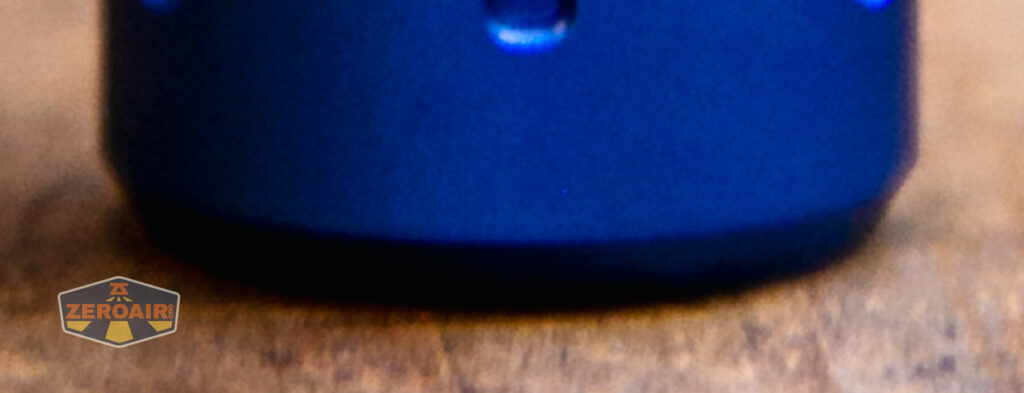










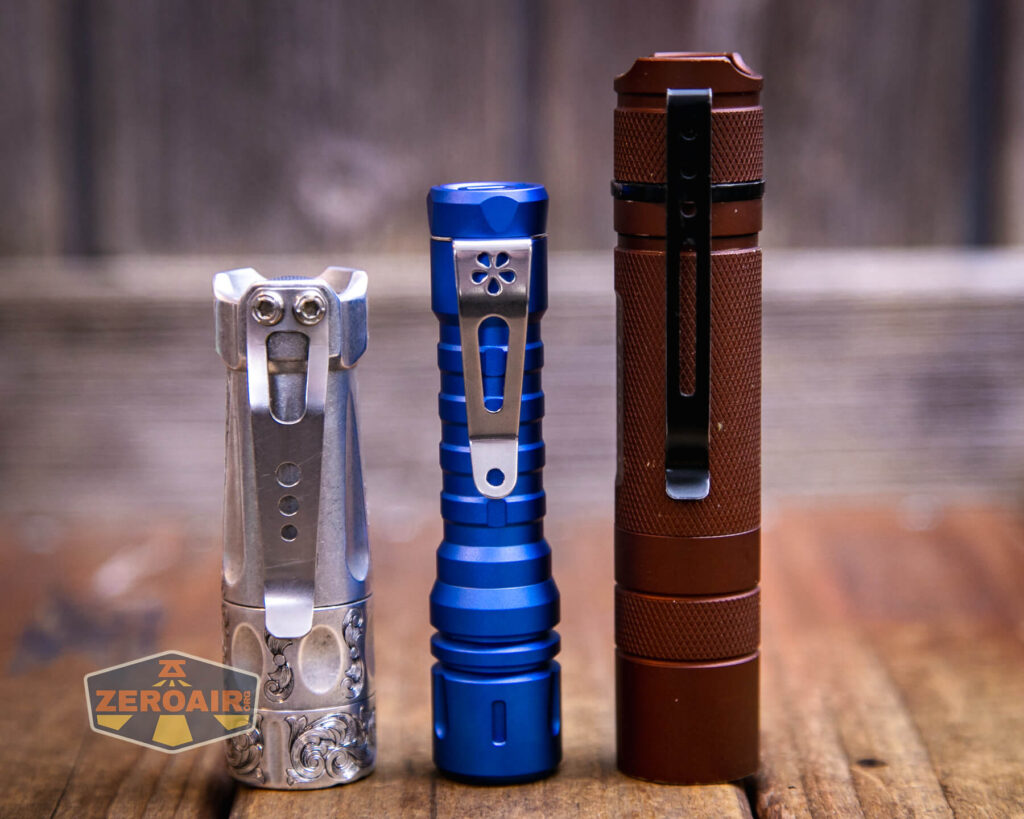
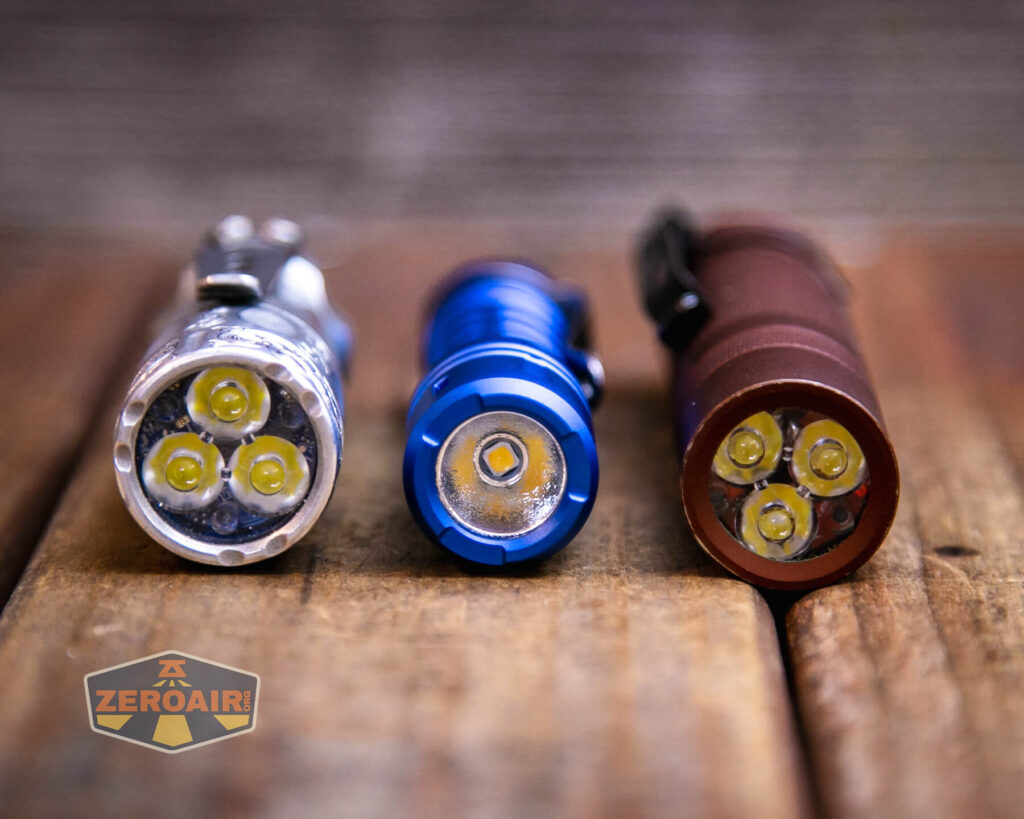



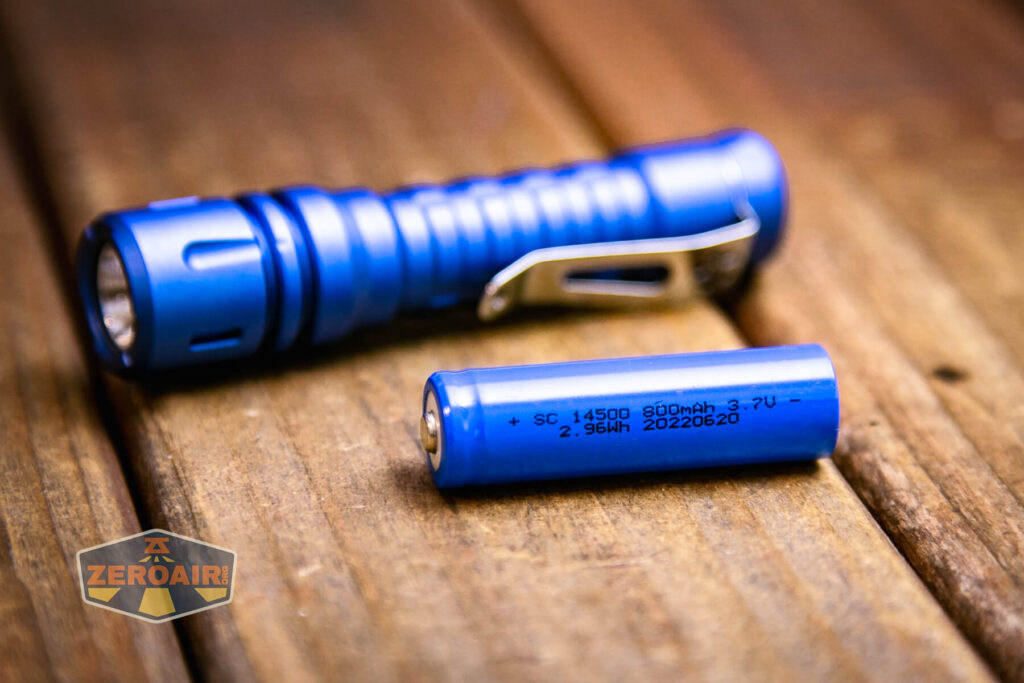




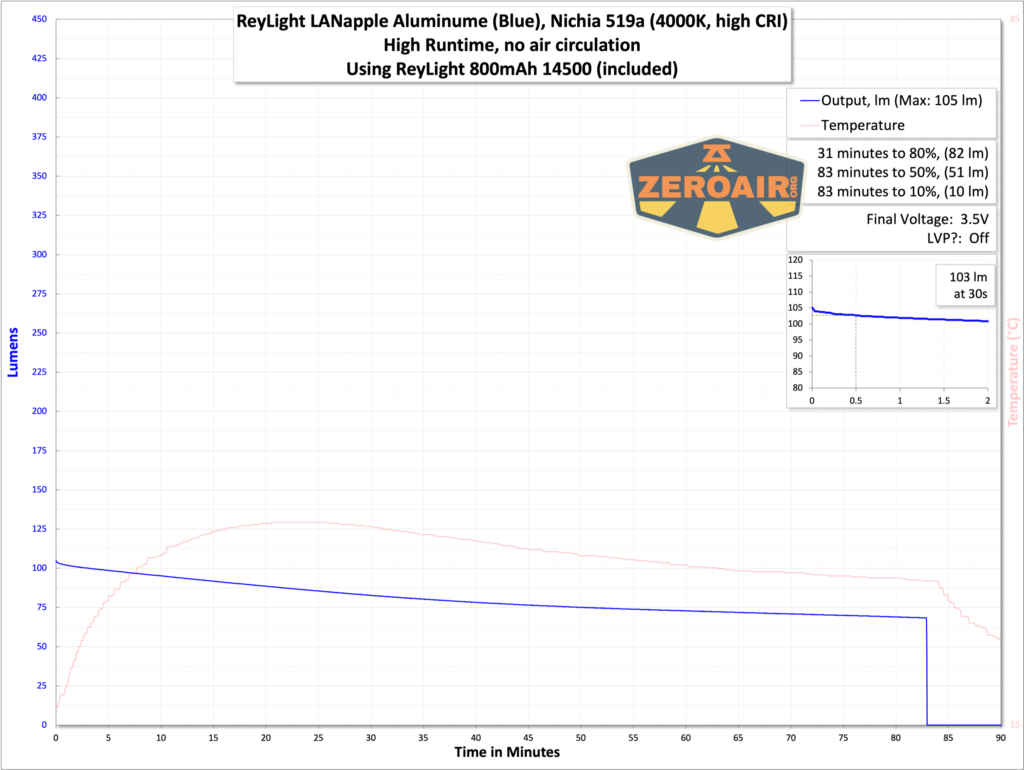

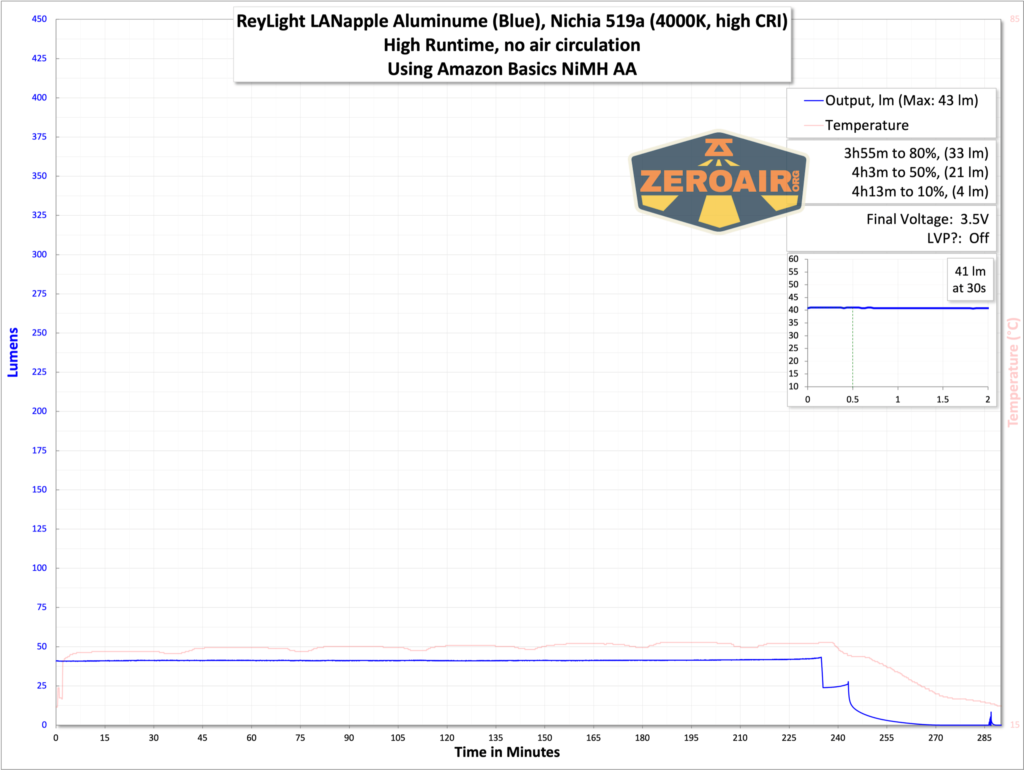









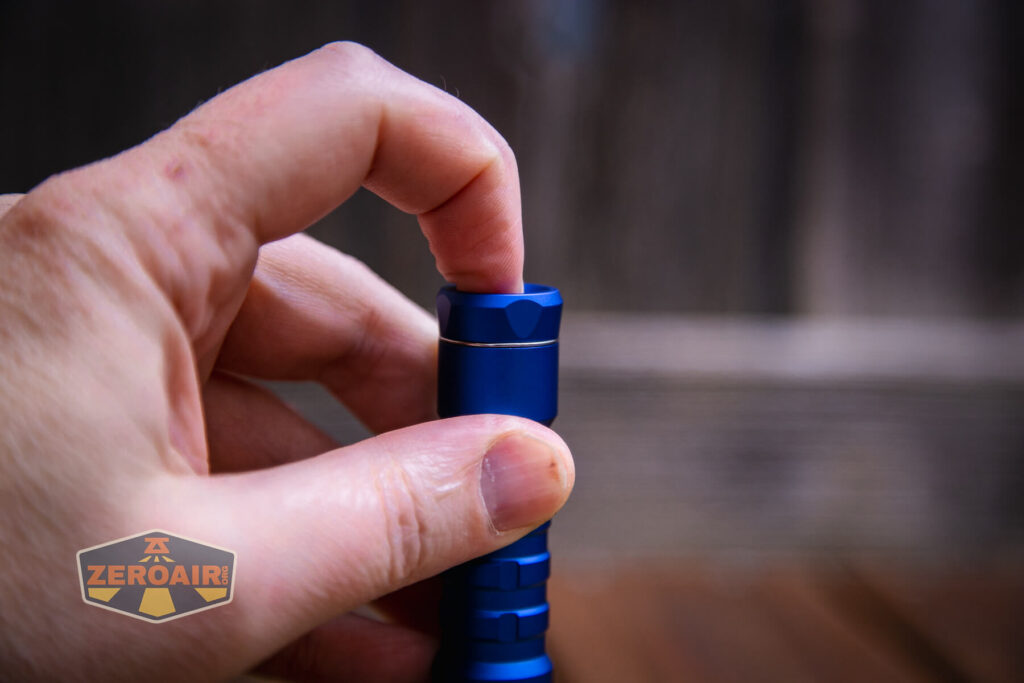
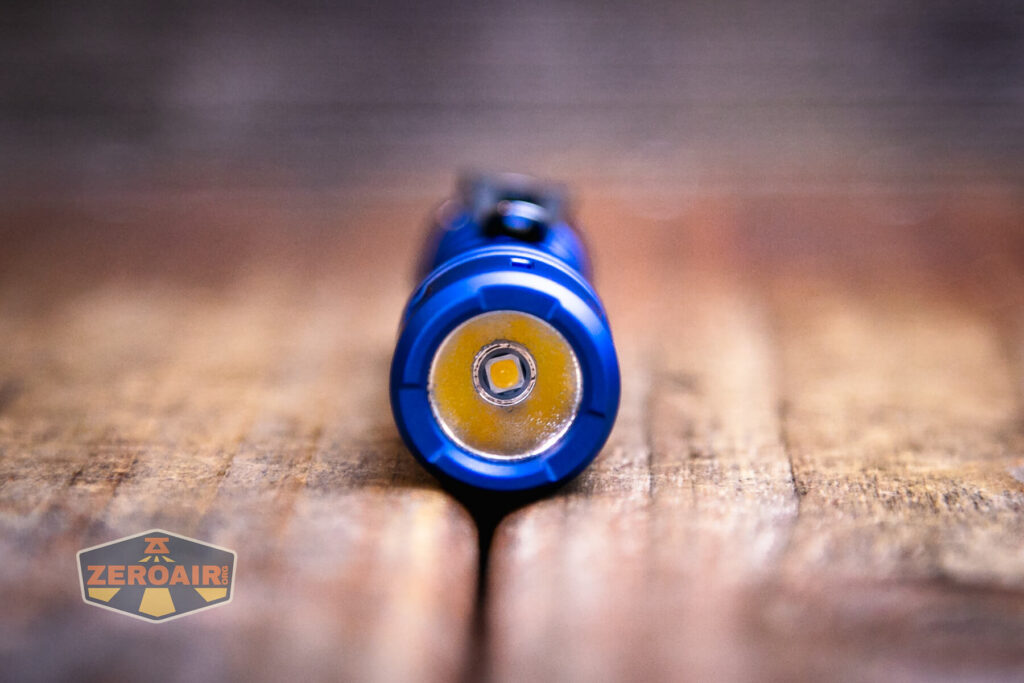
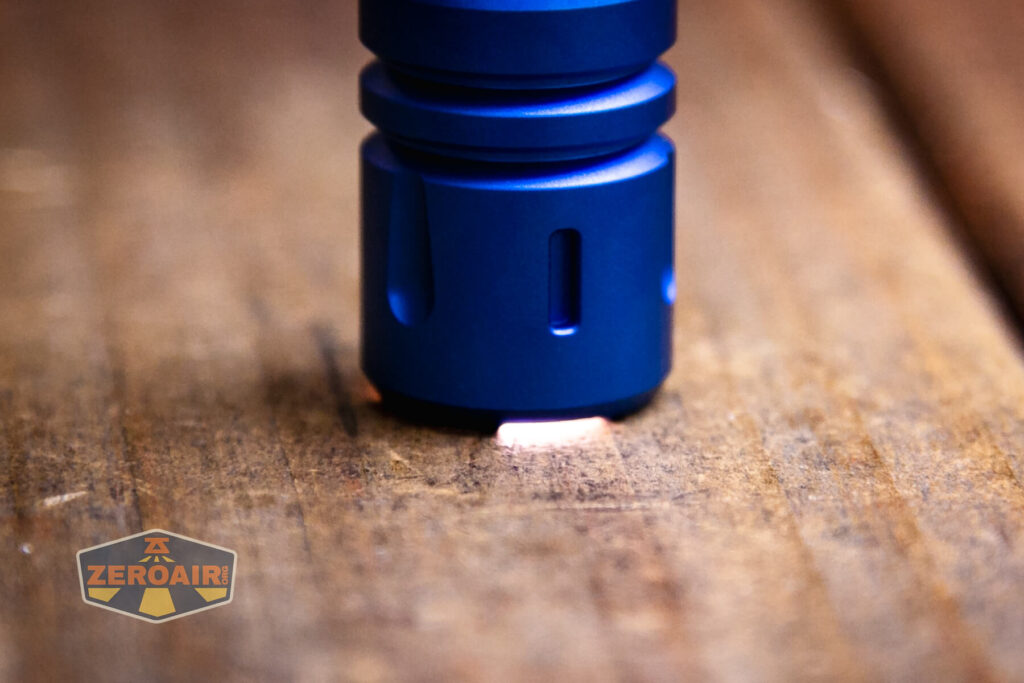


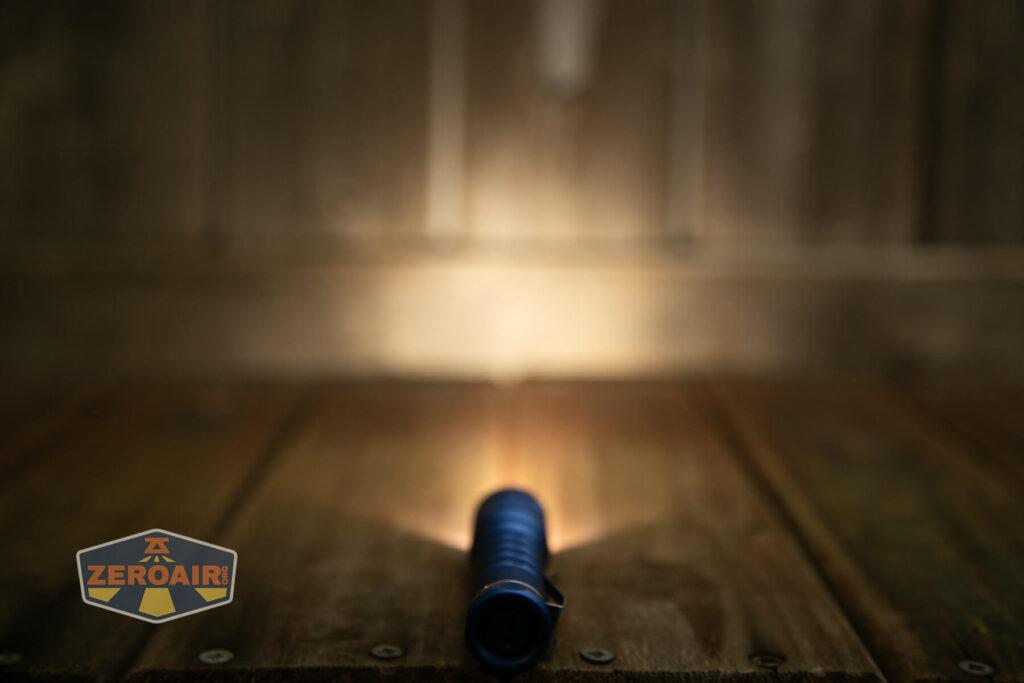




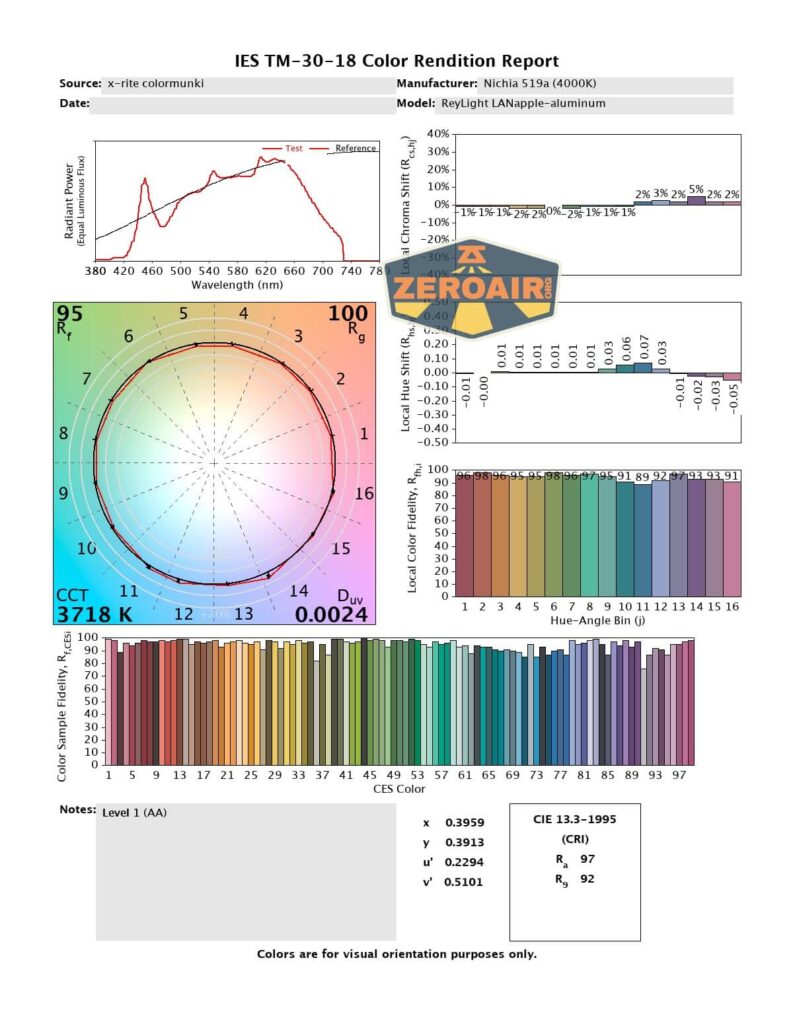




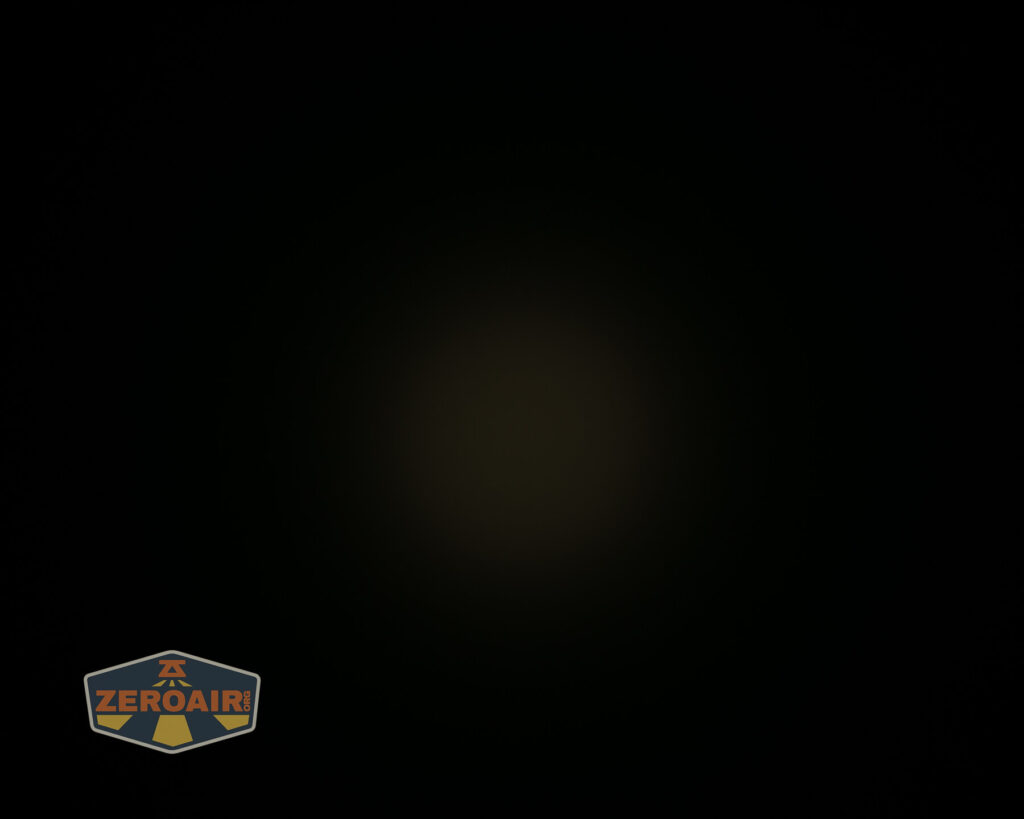
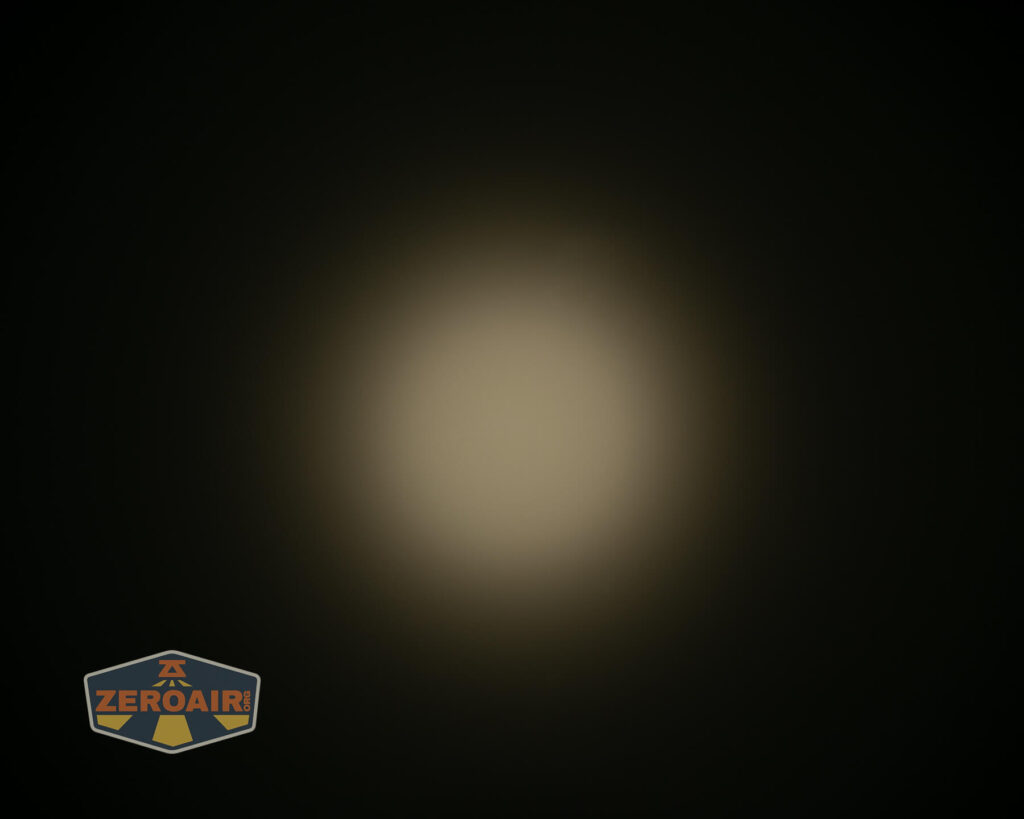

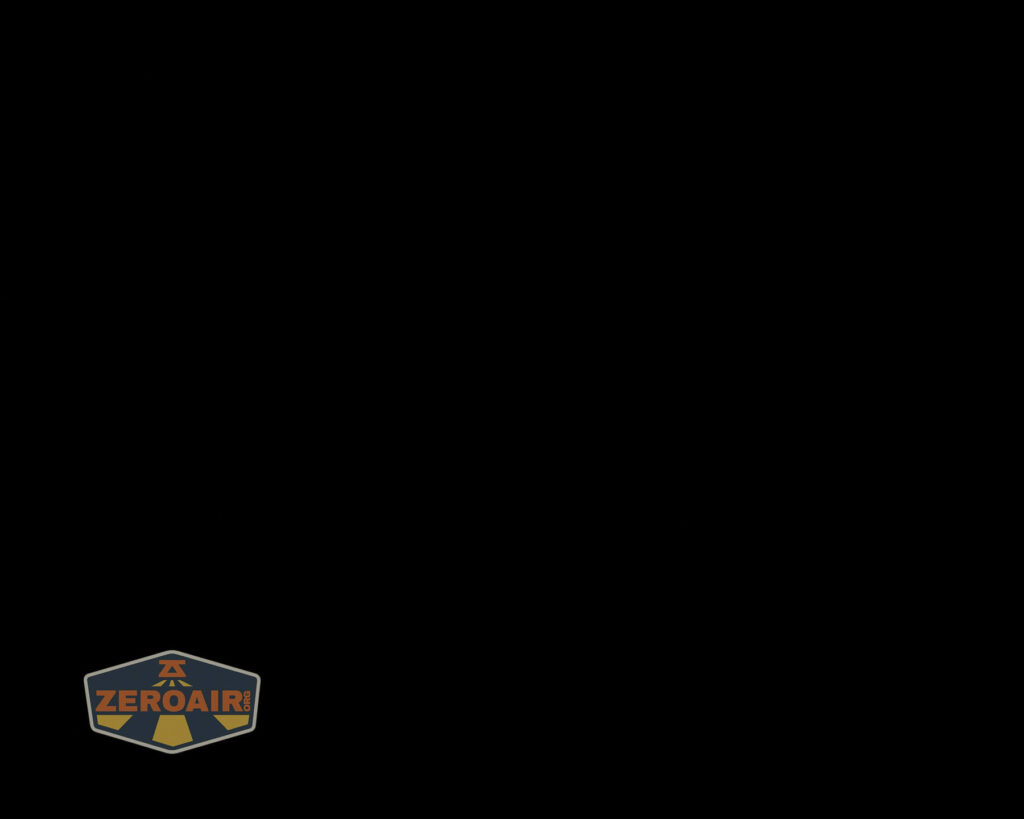
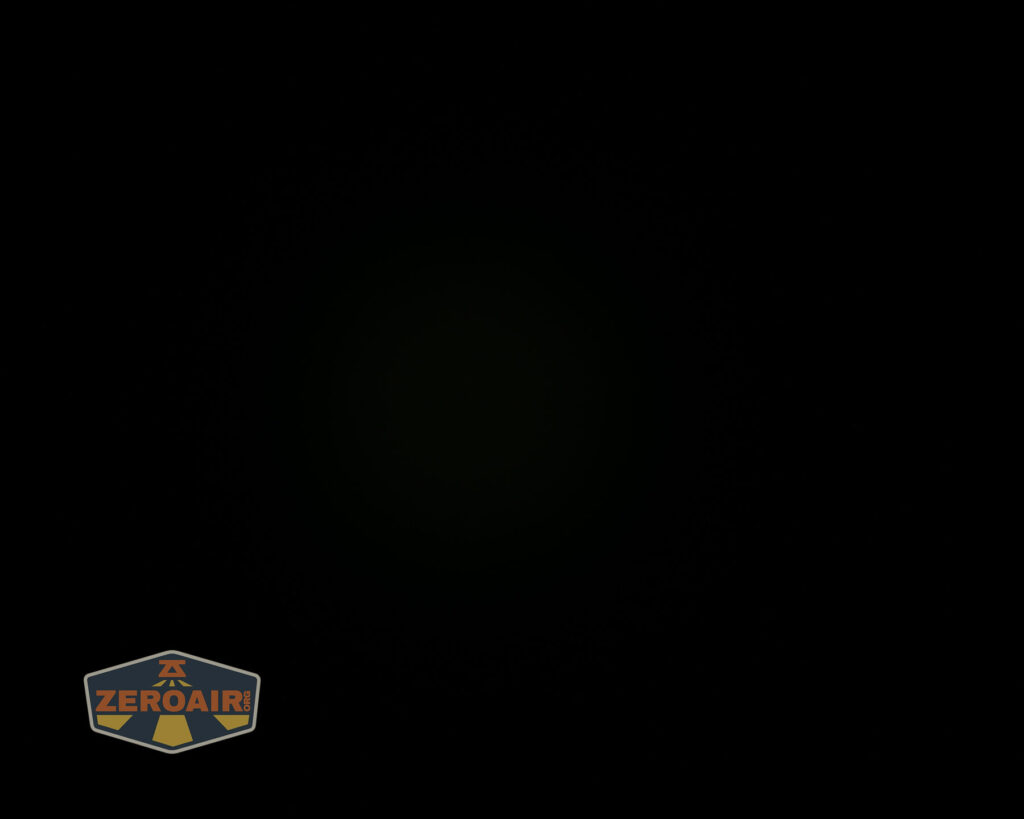
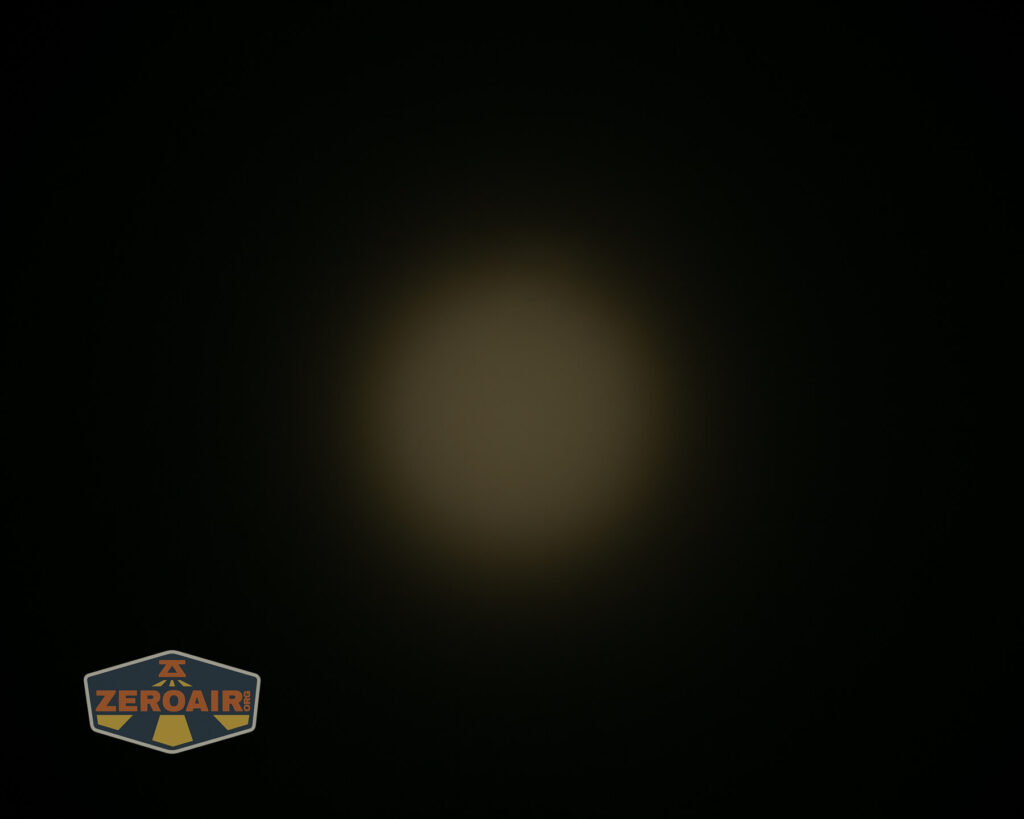
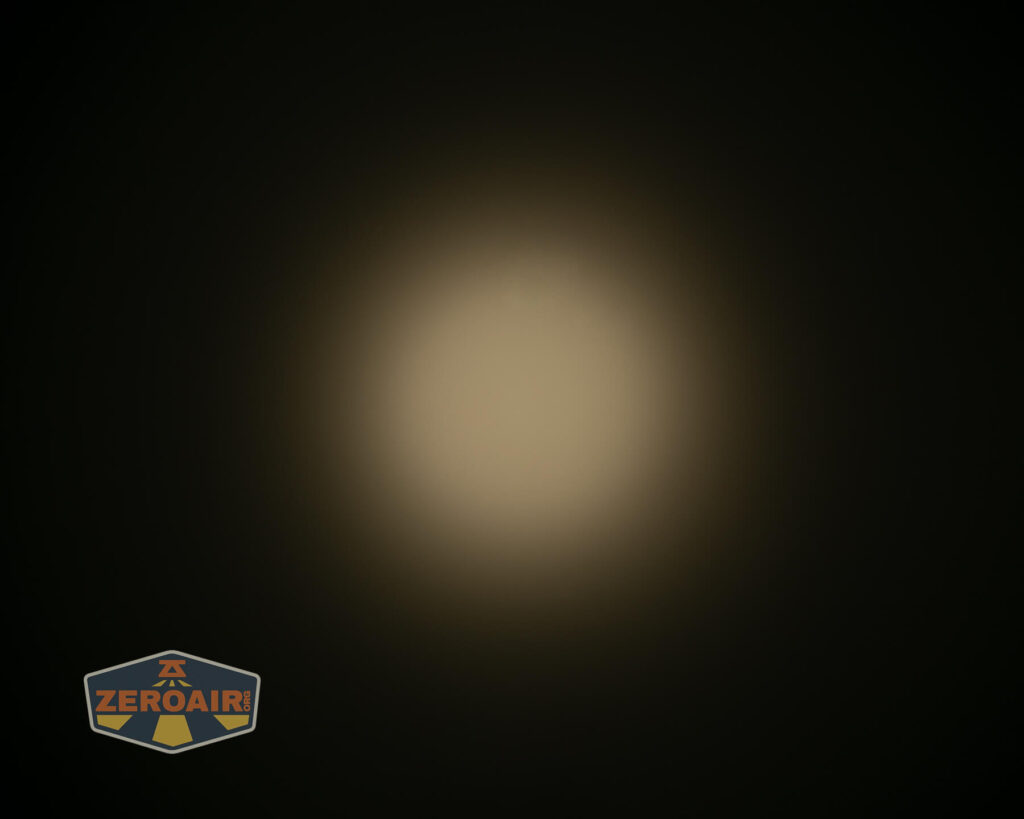


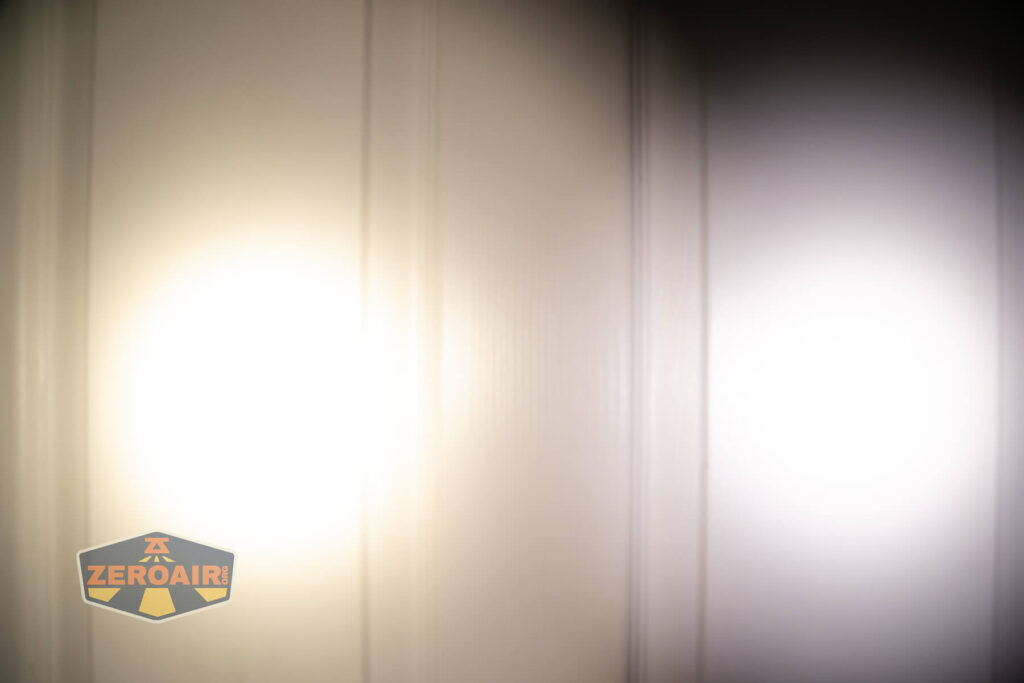
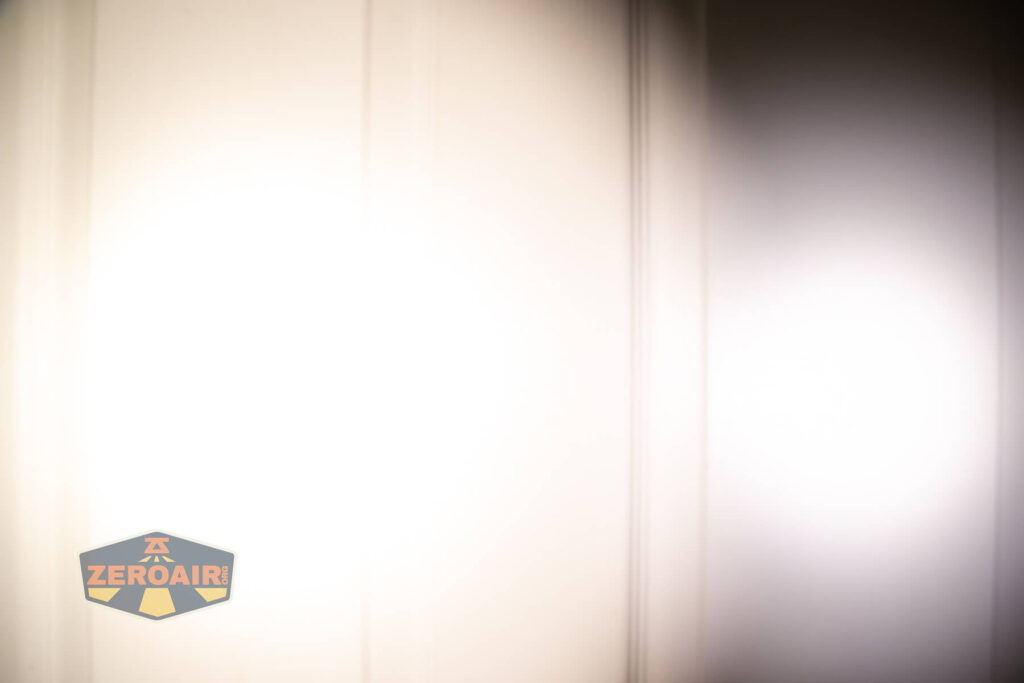
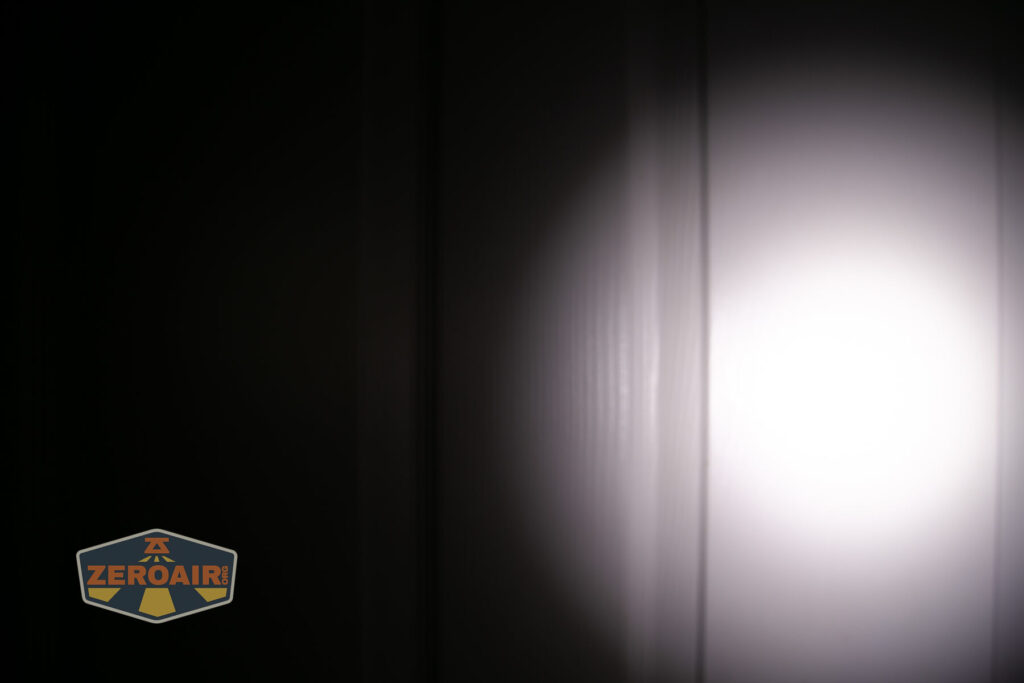
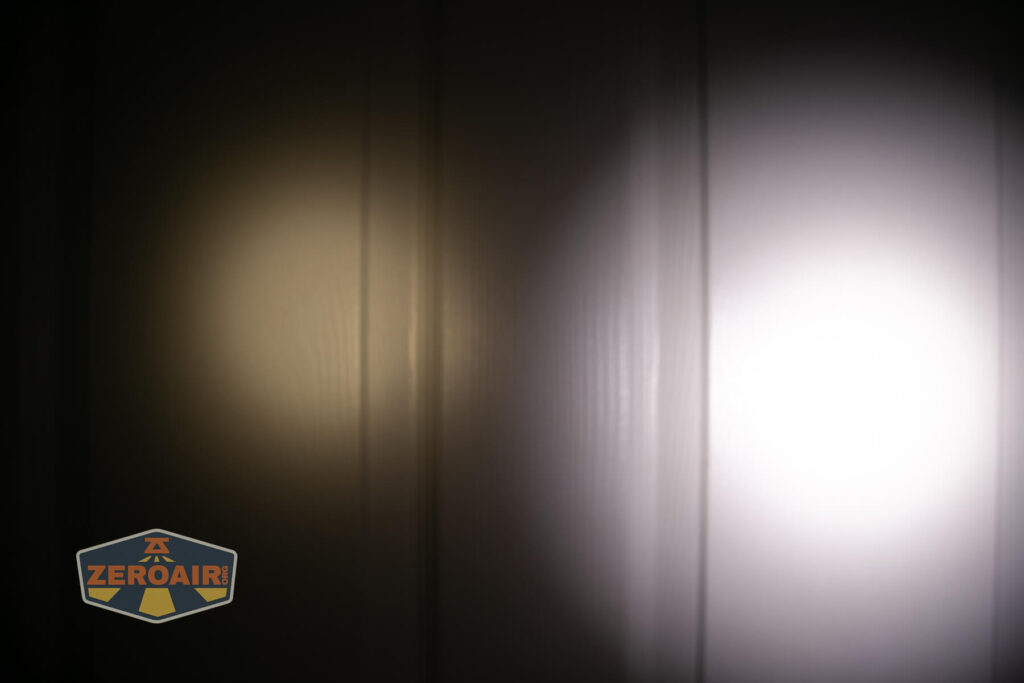


Excellent review of a great little (AA) size flashlight. Reylight also sells ($4) anodized Ti spacer rings to fill the space left if the pocket clip is removed.
Oh great note about that little spacer ring!! Thank you!